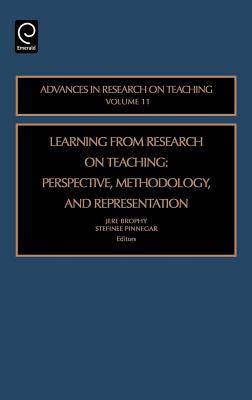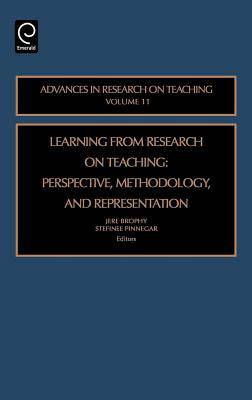
- Afhalen na 1 uur in een winkel met voorraad
- Gratis thuislevering in België vanaf € 30
- Ruim aanbod met 7 miljoen producten
- Afhalen na 1 uur in een winkel met voorraad
- Gratis thuislevering in België vanaf € 30
- Ruim aanbod met 7 miljoen producten
Zoeken
Learning from Research on Teaching
Perspective, Methodology, and Representation
€ 241,95
+ 483 punten
Omschrijving
This volume is designed to accomplish three primary purposes: illustrate a variety of qualitative methods that researchers have used to study teaching and teacher education; assess the affordances and constraints of these methods and the ways that they focus and shape explorations of teaching; and, illuminate representative questions and findings associated with each method described. The book is organized around three issues that impact research in qualitative paradigms: perspective, methodology, and representation. The first section, 'Perspective: Whom Should I Ask?' explores what can be learned by assessing teaching from different perspectives (teachers, teacher educators, students, parents), emphasizing that the perspective of the respondent influences what we can learn and shapes both our questions and our potential findings. The second section 'Methodology: How Do I Look?' addresses some of the qualitative research strategies that have been used to study teaching, including historical accounts, photos, drawings, and video. The third section, 'Representation: How Do I Show What I Saw?' explores the affordances and constraints of narratives, practical arguments, video ethnography, portfolios, and theater as methods for representing research findings. Qualitative research paradigms typically do not make claims based in the kinds of foundational criteria for generating knowledge that establish bases for generalizability. The book addresses this dilemma by providing findings, insights, and claims from qualitative research that appear to be useful in settings beyond those that generated the data, and thus inform our thinking about teaching and teacher education. In addition, its explorations of the affordances and constraints of qualitative research methods provide insightful and occasionally controversial contributions to our thinking about research on teaching and teacher education.
Specificaties
Betrokkenen
- Uitgeverij:
Inhoud
- Aantal bladzijden:
- 448
- Taal:
- Engels
- Reeks:
- Reeksnummer:
- nr. 11
Eigenschappen
- Productcode (EAN):
- 9780762312542
- Verschijningsdatum:
- 26/10/2005
- Uitvoering:
- Hardcover
- Formaat:
- Genaaid
- Afmetingen:
- 170 mm x 235 mm
- Gewicht:
- 793 g

Alleen bij Standaard Boekhandel
+ 483 punten op je klantenkaart van Standaard Boekhandel
Beoordelingen
We publiceren alleen reviews die voldoen aan de voorwaarden voor reviews. Bekijk onze voorwaarden voor reviews.







